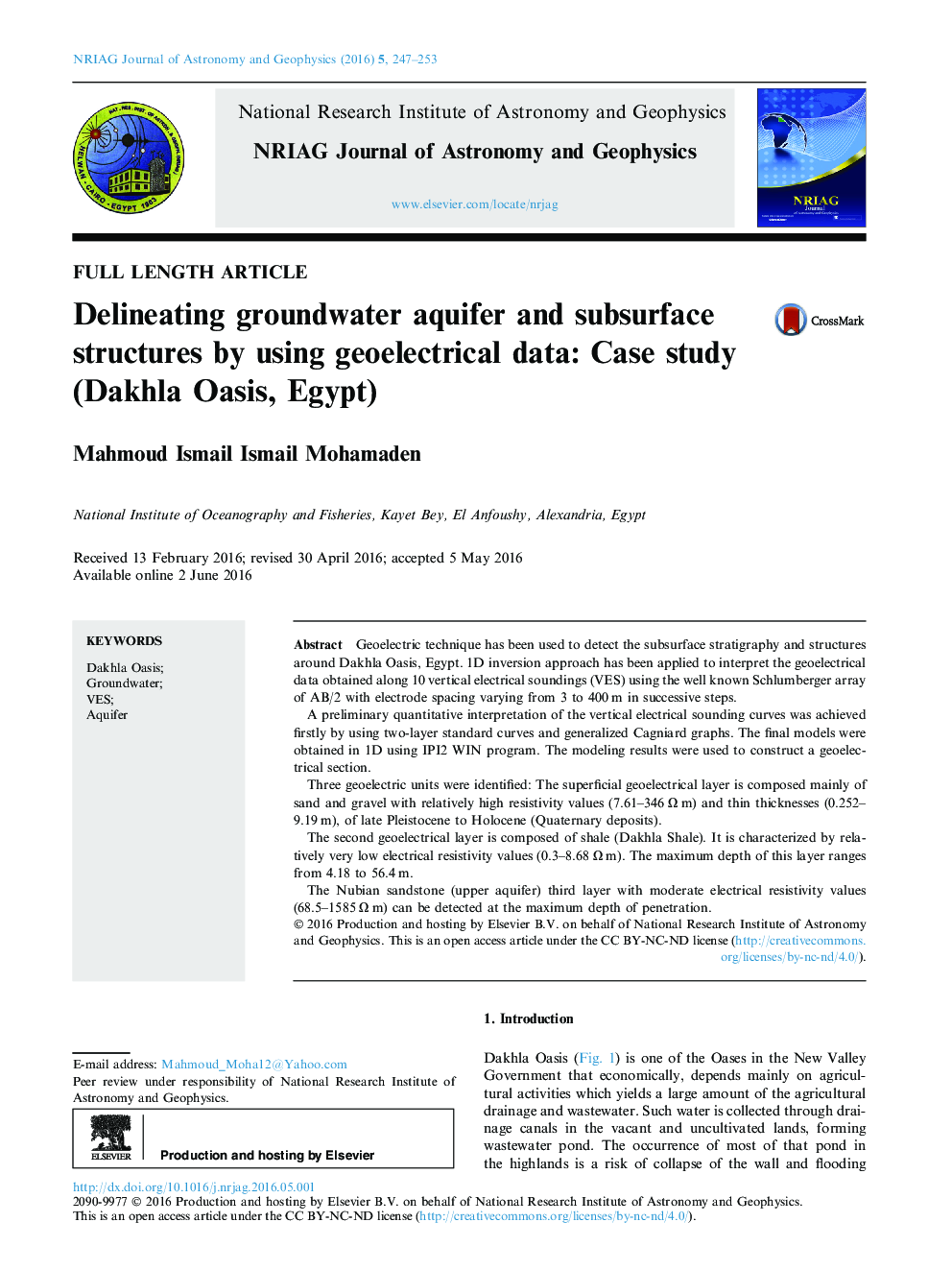| کد مقاله | کد نشریه | سال انتشار | مقاله انگلیسی | نسخه تمام متن |
|---|---|---|---|---|
| 1780569 | 1523835 | 2016 | 7 صفحه PDF | دانلود رایگان |
Geoelectric technique has been used to detect the subsurface stratigraphy and structures around Dakhla Oasis, Egypt. 1D inversion approach has been applied to interpret the geoelectrical data obtained along 10 vertical electrical soundings (VES) using the well known Schlumberger array of AB/2 with electrode spacing varying from 3 to 400 m in successive steps.A preliminary quantitative interpretation of the vertical electrical sounding curves was achieved firstly by using two-layer standard curves and generalized Cagniard graphs. The final models were obtained in 1D using IPI2 WIN program. The modeling results were used to construct a geoelectrical section.Three geoelectric units were identified: The superficial geoelectrical layer is composed mainly of sand and gravel with relatively high resistivity values (7.61–346 Ω m) and thin thicknesses (0.252–9.19 m), of late Pleistocene to Holocene (Quaternary deposits).The second geoelectrical layer is composed of shale (Dakhla Shale). It is characterized by relatively very low electrical resistivity values (0.3–8.68 Ω m). The maximum depth of this layer ranges from 4.18 to 56.4 m.The Nubian sandstone (upper aquifer) third layer with moderate electrical resistivity values (68.5–1585 Ω m) can be detected at the maximum depth of penetration.
Journal: NRIAG Journal of Astronomy and Geophysics - Volume 5, Issue 1, June 2016, Pages 247–253
